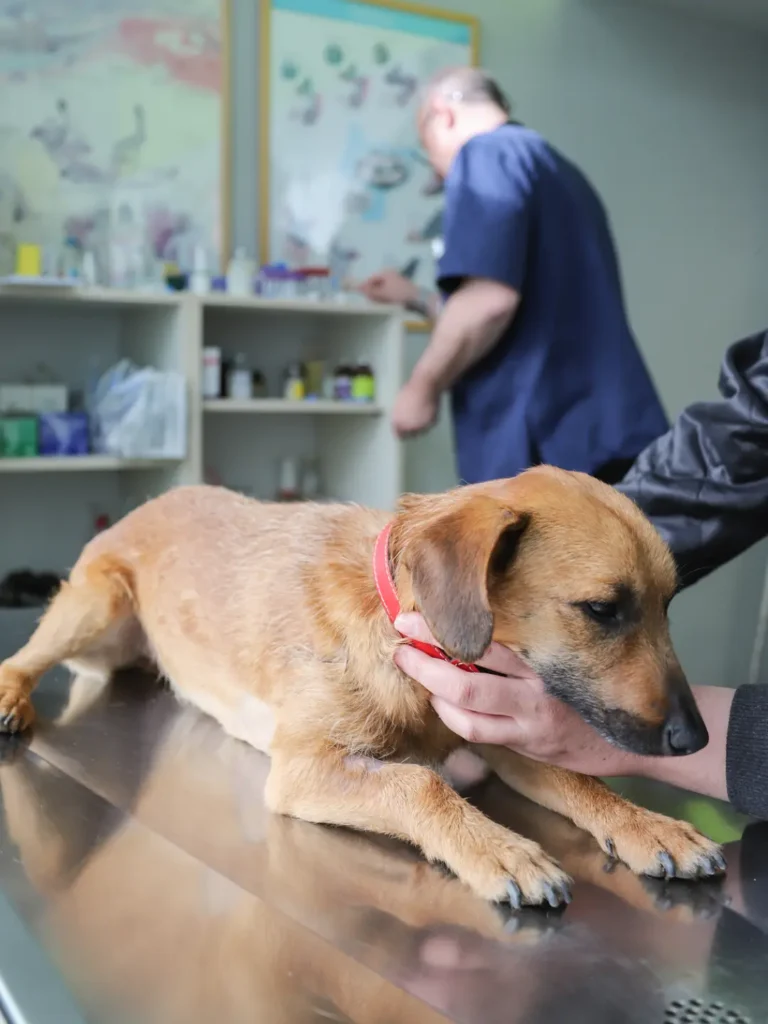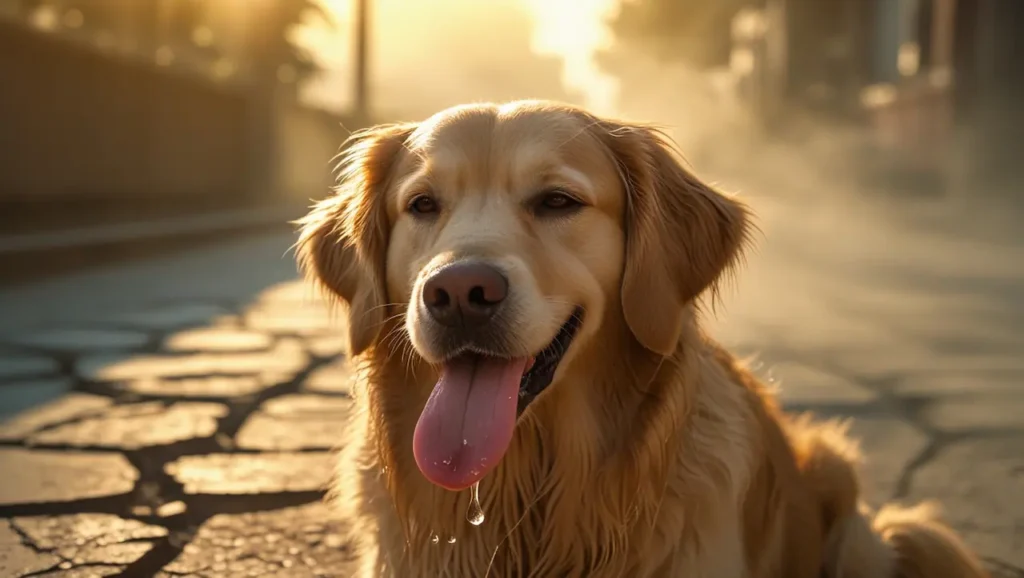Visiting the veterinarian is an essential part of keeping your dog healthy. However, for many dogs, vet visits can be stressful. Your dogs may feel anxious.
Fortunately, there are steps you can take to prepare your dog for a stress-free vet visit. By planning ahead and using positive reinforcement, you can make the experience comfortable.
Importance of Vet Visiting
Vet visits allow veterinarians to monitor your dog’s physical condition. Vets assess vital signs, evaluate body weight, examine teeth and gums, and screen for common diseases. Early detection of problems enables prompt intervention.
These examinations are helpful for preventing minor issues from escalating into serious health concerns. Vaccinations, parasite control, and nutritional guidance also play a critical role in safeguarding your dog against illnesses.
Beyond physical health, vet visits contribute to your dog’s emotional and behavioral well-being.
Veterinarians are trained to identify signs of stress, and behavioral issues. For example, excessive barking, aggression, and house-soiling could indicate underlying health problems rather than mere disobedience. By discussing these behaviors with your vet, you can gain valuable insights and strategies to manage them effectively.
Additionally, regular vet interactions help socialize your dog to new environments. This reduces fear and build confidence over time. This preparation makes future vet visits less stressful.
Finally, vet visits foster a proactive approach to your dog’s long-term care. This gives you peace of mind as a responsible pet owner. Knowing that your dog is up-to-date on vaccinations allows you to focus on enjoying their companionship without constant worry.
Vets also serve as trusted partners in navigating your dog’s unique needs. They offer tailored advice on nutrition, exercise, grooming, and senior care. In essence, regular vet visits are an investment in your dog’s happiness, and quality of life.
Preparing Dog for Vet Visit
Here’s a guide on how to prepare your dog for vet visit.
Choose the Right Time
Timing plays a crucial role in ensuring a smooth vet visit. It significantly impacts your dog’s mood. Scheduling an appointment at the wrong time could exacerbate stress. For instance, avoid booking visits immediately after vigorous exercise. After physical activity, dogs feel tired. This can lead to restlessness during the appointment.
Similarly, mealtime is another period to steer clear of. Hunger and fullness affect their temperament.
Instead, aim for a time when your dog is naturally calm and relaxed. Mid-morning and early afternoon work well. These times typically fall between naps and meals. This leaves your dog in a balanced state.
Additionally, consider the clinic’s schedule when making your appointment. If possible, choose a less busy time slot to minimize wait times. Less noise and fewer distractions in the waiting area help keep your dog calm.
Practice Good Behavior at Home
Preparing your dogs for a vet visit. Train them to behave appropriately during stressful situations. Teach basic commands such as “sit,” “stay,” “come,” and “leave it.” These commands give your dog a sense of structure and familiarity in an unfamiliar environment.
Practicing these commands regularly helps build confidence. This ensures they respond reliably during vet visit.
Equally important is desensitizing your dog to being handled. During a vet exam, your dog will need to tolerate having their ears checked, paws touched, mouth opened, and tail lifted.
To prepare them for this, incorporate gentle handling into daily routines. For example, touch their paws while praising them, gently lift their lips to inspect their teeth, and softly rub their belly. Reward them with treats or affection each time they remain calm.
Over time, this practice will reduce fear during the actual examination. This makes the process smoother.
Get Them Used to the Car Ride
Car rides can evoke strong emotions in dogs. Some dogs love hopping into the car. Others, however, may dread car travel due to past negative experiences. To ensure your dog feels comfortable traveling to the vet, start by acclimating them to car rides gradually.
Begin with short, enjoyable journeys to places your dog loves. Keep these trips positive. Offer praise, treats, and toys during and after the ride. Gradually increase the length of the trips. On the day of the vet visit, bring along items that provide comfort. These familiar objects offer reassurance and help ease nervousness.
Socialize Your Dog
Socialization is key to helping your dog adapt to new environments. This also helps your dog during vet visit. A well-socialized dog is less likely to feel overwhelmed by unfamiliar sights.
Socialization should ideally begin during puppyhood. Adult dogs can also benefit from gradual exposure to new experiences.
Expose your dog to a variety of environments. Introduce them to strangers, take them to dog parks, and walk them through busy streets. Pay attention to how they react. Reward calm behavior with treats.
At the vet’s office, socialization skills come into play when your dog encounters other animals, hears loud noises, and interacts with unfamiliar staff members. A socially confident dog will handle these situations with greater ease.
Bring Familiar Items
The vet’s office can be an intimidating place for dogs. This place is full of unfamiliar smells, sounds, and surroundings. Bring items from home. This creates a comforting sense of security and help your dog feel at ease.
Consider packing their favorite leash and collar. Using familiar gear provide stability. If your dog uses a carrier, line it with their bed.
Toys are another excellent way to comfort your dog during the visit. Chew toys, plush toys, and interactive puzzles can occupy their mind and reduce anxiety. Treats are also invaluable.
In addition to tangible items, your presence and demeanor are equally important. Stay close to your dog. Speak in soothing tones. Offer plenty of affection. Your calm and reassuring attitude serves as the ultimate familiar item.
Use Positive Reinforcement
Positive reinforcement is effective tools for shaping your dog’s behavior. This helps reduce anxiety during vet visits. Dogs thrive on praise and rewards. Using these methods can transform their perception. The key is to consistently reward calm behavior throughout the visit.
Start by carrying a supply of high-value treats. Whenever your dog exhibits desired behaviors, immediately offer verbal praise and a treat. This instant feedback helps your dog understand exactly what they’re being rewarded for.
You can also use toys and affection as forms of positive reinforcement. Know first what motivates your dog the most. Over time, this consistent association between vet visits and positive outcomes will help your dog develop a favorable attitude.
It’s important to note that patience is essential. Some dogs take longer to adjust to the vet environment. So celebrate small victories along the way. Even incremental progress is worth acknowledging and rewarding.

Prepare for the Waiting Room
Waiting room at the vet’s office can be challenging for many dogs. The reason behind this is the presence of other animals. These factors heighten anxiety and lead to overstimulation. To minimize stress, preparation is key.
Always keep your dog on a leash while in the waiting area. This prevents accidental escapes. You can skip unwanted interactions with other animals. If using a carrier, make sure it’s well-ventilated and lined with a familiar blanket.
Maintain a safe distance from other pets in the waiting room. If the space feels too crowded, ask the receptionist if you can wait outside. Many clinics accommodate such requests to reduce stress for nervous patients.
If you appear anxious, your dog is likely to mirror those feelings. Practice deep breathing. Speak in soothing tones. Remain composed. Your calm demeanor will serve as a stabilizing force. It helps your dog feel secure.
Fasting Instructions
In certain cases, your veterinarian may instruct you to fast your dog prior to their appointment. Fasting is typically required before procedures involving anesthesia, bloodwork, and diagnostic imaging. Following these instructions carefully is critical for several reasons.
Food in your dog’s system can interfere with blood tests. This can lead to inaccurate readings. For example, elevated glucose levels after eating could mask underlying health issues. By fasting your dog, you ensure the results reflect their true baseline health status.
When undergoing anesthesia, having food in the stomach increases the risk of vomiting. Fasting minimizes this risk.
If fasting is required, your vet will usually specify how long your dog should abstain from food. Water is generally allowed unless otherwise stated. Be sure to clarify any questions you have about the fasting period.
Update Records and Medications
Be organized before vet visit. It saves time. Administrative discipline allows the veterinarian to focus on your dog’s health. Gather all relevant documents and supplies ahead of time.
Keep track of your dog’s vaccination history. This ensures they stay up-to-date on essential immunizations and avoids unnecessary repeat shots.
If your dog is currently taking medications, bring a detailed list of dosages and frequencies. It’s also helpful to bring the actual medication bottles. It helps your vet to verify the information.
Bring recent lab work and X-rays. Share the results with your vet. This provides valuable context for assessing changes in their condition.
Arriving prepared demonstrates your commitment to your dog’s health. It enables the vet to make informed decisions quickly. Consider keeping a dedicated digital file for all your dog’s medical records to streamline future visits.
Communicate Concerns Early
Open communication with your veterinary team is vital. It ensures a smooth and tailored experience for your dog. If your dog has specific fears, sensitivities, and medical conditions, inform the staff as early as possible.
Let the clinic know if your dog becomes anxious around strangers. They may suggest scheduling the appointment during quieter hours.
Inform the vet about any chronic illnesses your dog has. This allows them to customize the examination and treatment plan accordingly. For instance, if your dog has arthritis, the vet might avoid placing excessive pressure on painful joints during the physical exam.
If your dog has had negative experiences at the vet in the past, share this information. The staff can take extra precautions to create a supportive environment.
By communicating openly, you empower the veterinary team to address your dog’s unique needs effectively. Don’t hesitate to ask questions or express concerns. Veterinarians appreciate proactive owners who prioritize their pet’s well-being.
Preparing your dog for a vet visit requires patience. With proper training, you can transform what might otherwise be a stressful event into a manageable experience. Regular vet visits are vital for maintaining your dog’s health.




